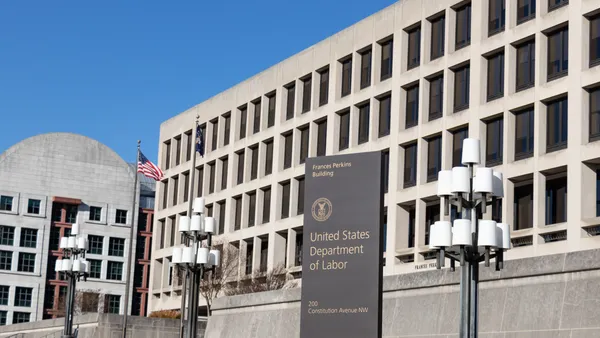The Supreme Court demonstrated in its recent term, across a variety of decisions crucial to business, that it’s focused on apportioning authority from the executive branch to judges, according to a panel of lawyers with experience before the top court.
“It’s awfully hard to miss one of the unifying themes across many of the court cases this term: the court’s disruption of the administrative state and its interest in cutting back on the administrative state’s power,” said Michael Kimberly, a McDermott partner in Washington, D.C. and co-director of Yale Law’s Supreme Court Advocacy Clinic.
He spoke Thursday on a panel of three attorneys discussing the court’s term that ended in early July. The webinar was convened by the Washington Legal Foundation, which advocates in court for conservative causes.
The nearly 40 executive branch rulemaking agencies “lost a fair amount of authority both to make law and to enforce it,” Kimberly said, calling the Loper Bright, Corner Post, Jarkesy-SEC and other decisions “part of the justices’ project to begin reallocating authority among the branches.”
“All those cases together and others reflect a general diminishment of the relative power of agencies vis a vis courts,” he said. “I think this term has also shown that this really is the Roberts and Kavanaugh court” as both voted with the majority in at least 90% of cases, he said.
Congress enacted the Administrative Procedure Act 78 years ago, covering around 20 agencies and 13 volumes in the Code of Federal Regulations, Kimberly said. Today, the government has three dozen agencies and 235 CFR volumes, he said.
Beyond the term’s blockbuster cases – the end of courts’ deference to administrative agency expertise, presidential immunity, the demise of administrative law courts for many cases – the justices adopted numerous extremely narrow rulings in some areas of the law, said Daniel Rubens, a partner at Orrick, Herrington & Sutcliffe LLP.
The justices largely agreed in areas such as bankruptcy, arbitration and preemption but their holdings “were sometimes narrow to the point of sometimes being minimalist and sometimes less than minimalist,” he said.
“They granted cert (certiorari) and then the content of the decision was basically, ‘You got it wrong. Do it over. But I’m not really going to give you more than that,’” Rubens quipped. “You come away not having as much guidance for the bar.”
The Jarkesy-SEC decision, which precludes the use of administrative law courts for securities fraud cases, could prove more “consequential” for U.S. companies than the Loper Bright case, ending judicial deference the same court bestowed on agencies in 1984, Kimberly said.
“As a practical matter it’ll be nearly impossible for agencies to assess penalties and fines for enforcement of regulatory schemes,” he said.
The Jarkesy case was argued, and decided, almost entirely on 7th Amendment jury-trial grounds, with the justices declining to engage with issues about administrative law judges’ tenure protections or whether an agency should be allowed to select venue to adjudicate cases, said Elizabeth Slattery, an attorney with the Pacific Legal Foundation, which argues legal cases for conservative and libertarian causes.
“In some ways, the 7th Amendment issue was the easiest for them,” she said. “We’ll see what happens in terms of how broad it will apply to other agencies” beyond the Securities and Exchange Commission.











